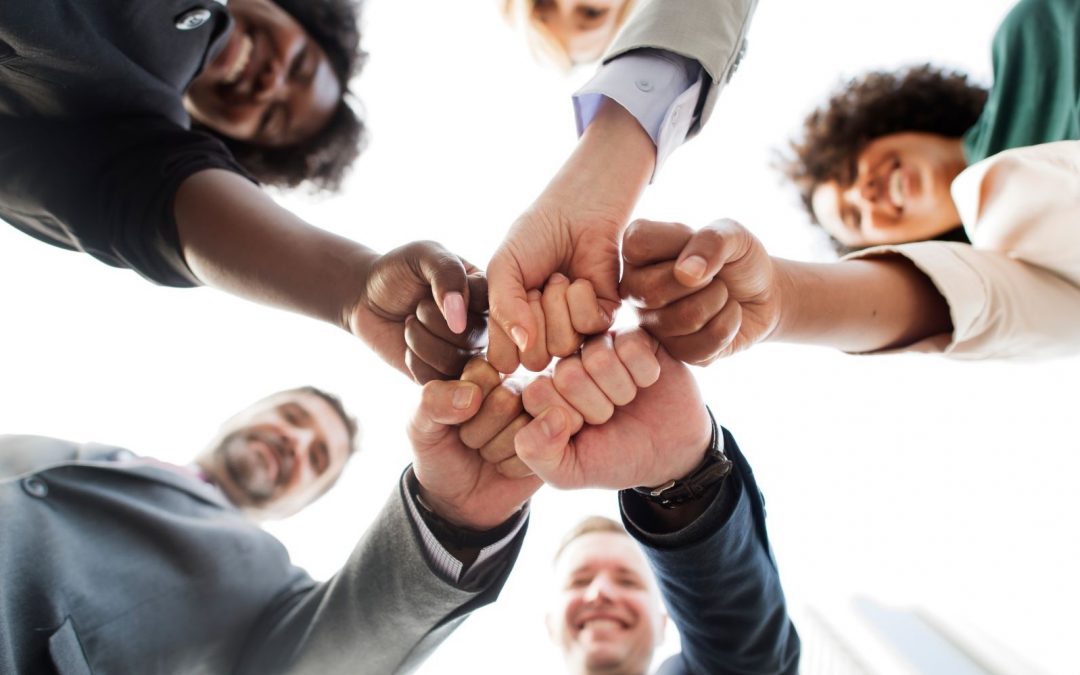The very idea and purpose of transformational leadership relates to the different organizational models and the five stages of building a team.
A Leadership Cake
When we talk about the five stages of building a team, we are talking about a leadership cake that leaders want to try to create, but they don’t have the specific tools, ingredients, and recipe to do it. So, as we describe these five stages, we will give you the recipe along with the specific tools, ingredients, and behaviors you need to be able to establish your organization in each stage and advance to the next stage.
Visionary Stage
The first stage is what we call the visionary or the safety stage. That stage looks like the top-down model, but we have renamed it. It is not the command-control or the top-down. We renamed it the visionary stage. What happens in that stage? We can talk to each other openly and honestly. Discomfort is removed, and trust is developed. Anxiety is eliminated. Some of the tools we use in this stage include a commitment as to how we are going to treat each other and how we will handle it when we don’t treat each other in those ways, resolving conflict, stopping gossip, being open and honest, welcoming each other, engaging in team-building activities, creating a friendly atmosphere, affirming each other, trusting each other, sharing feelings, having a leader who casts vision, understanding the difference between the ways our brains work and that in some brains everything is connected to everything and other brains comprise separate boxes, and understanding that change brings with it different dynamics for each member of the group.
Cohesive Stage
What’s stage two? We call that the cohesive stage which is also the servant leadership stage. This stage is where the teaching, training, and equipping all take place. What happens in this stage? We start accepting one another and each other’s roles even though the roles still may not be clearly identified yet. As we learn to trust each other in those roles, however, that trust we had in stage one is further developed and cohesiveness takes place. This stage includes all that stage one brought and expands to listening to each other, making it a point to affirm each other, fully following our agreement about how we have committed to treating others, and understanding that people may have events in their past that colors their reactions to the present, identifying core beliefs and how we look at ourselves and how we handicap ourselves with negative thoughts, knowing what causes anger, receiving feedback as we acknowledge we may have issues that we haven’t dealt with, and breaking into small groups to make decisions.
Functional Responsibility Stage
That takes us to stage three that we call functional responsibility where role clarity has developed. In this stage, we can start delegating and empowering. This stage is characterized by each person now accepting responsibility for their own thoughts, feelings, and actions. Each person’s role is now clearly identified, and the team members are concerned about each other and the other departments and not just their own. Some of the characteristics in this stage include all of those we have adopted in stages one and two as well as identifying a vision, mission, and purpose along with objectives, strategies, and actions to fulfill those goals; the leader speaking last; delegating duties and responsibilities until others are empowered to take on duties without having to be given step-by-step instructions and permission; learning how to deal with upset people; using discipline as a way to help people grow instead of for punishment, and each person learning what serves as emptiers in their lives and what serves as fillers for them.
Relactional Stage
That leads us to stage four. Now the relationships are getting stronger, and we call this the relactional stage where the importance of the transactions and the relationships starts coming together in balance and harmony. In this stage, we can fully empower the members of the organization and let the people go to fulfill their functions and role. What’s this stage look like? We can examine individual, group, and organizational concerns free of fear and threat. This stage carries forward all those characteristics from stages one, two, and three and adds to those the appropriate staff in the appropriate role with clear role definitions; each person’s clear understanding of their role and responsibilities and being responsible for their own thoughts, feelings, and actions; continuous training; addressing issues that impact a high performing team by identifying individual high and low performers and healthy versus unhealthy relationships; identifying and solving constraints to resolve problems; and giving and receiving honest and open feedback.
Continuous Improvement Stage
Now we are at that fifth stage that we call continuous improvement. We are letting go because we’re fully empowered. And we’re evaluating. What happens here is the groups and individuals not only take responsibility for their own thoughts, feelings, and behaviors, but they pursue newer and better thoughts, feelings, and actions. We call that bubble jumping as the group and the individuals both inside and beyond their group learn these tools and are ready to advance to other paradigms to solve problems. This stage operates with all the characteristics of the teams in stages one through four and its members have the ability to work, plan, train, and play at the same time; to value everyone’s opinion; to consider all feedback relevant; to ask questions instead of giving answers; to evaluate the vision, mission, purpose of the team, as well as their objectives, strategies, and actions; to be able to disagree and still move forward the actions and plans agreed upon; to fully utilize discipline as a teaching tool, and to distribute work evenly.
In this place, we really can learn to play and plan and work and enjoy each other at the same time because we’re making good, hard business decisions that must be made to be able to make the company more functional and more profitable, or to make the sports team better winners and more successful, or to make the family more functional and interactive.
As you read these words, I want you to know that you are the leader I’m talking to. You are the leader of the group of which you are a part and in which you have influence simply because you are a part of that group, While some might call the leader the boss, whether you have that title or not, I’m talking to you as a leader right now. And I’m talking about intentionally committing to using these tools identified in each of these stages. If we don’t intentionally use these tools in each of these stages, they will remain only words on the page and will be absolutely useless, but if we will commit to using these tools, these behaviors, this recipe, we can bake a leadership cake that is transformational and works in all the different spheres of society and of your life.
Ford Taylor is a leadership strategist, keynote speaker, and the author of Relactional Leadership. As the Founder of Transformational Leadership, he is known as a man who can solve complex business issues, with straightforward practical solutions, while maintaining his focus on people.



